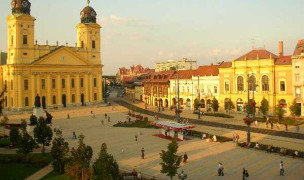 25 Terms
25 TermsHome > Terms > Kazakh (KK) > литография
литография
A printing process based on the antipathy of grease and water. The image is applied to a grained surface (traditionally stone but now usually aluminium) using a greasy medium: greasy ink (tusche), crayon, pencils, lacquer, or synthetic materials. Photochemical or transfer processes can be used. A solution of gum arabic and nitric acid is then applied over the surface, producing water-receptive non-printing areas and grease-receptive image areas. The printing surface is kept wet, so that a roller charged with oil-based ink can be rolled over the surface, and ink will only stick to the grease-receptive image area. Paper is then placed against the surface and the plate is run through a press. Lithography was invented in the late eighteenth century, initially using Bavarian limestone as the printing surface. Its invention made it possible to print a much wider range of marks and areas of tone than possible with earlier printmaking techniques. It also made colour printing easier: areas of different colours can be applied to separate stones and overprinted onto the same sheet. Offset lithography involves printing the image onto an intermediate surface before the final sheet. The image is reversed twice, and appears on the final sheet the same way round as on the stone or plate.
- Besedna vrsta: noun
- Sinonim(-i):
- Blossary:
- Industrija/področje: Art history
- Category: General art history
- Company: Tate
- Proizvod:
- Akronim/okrajšava:
Ostali jeziki:
Kaj želite sporočiti?
Terms in the News
Featured Terms
күш
An entity that when applied to a mass causes it to accelerate. Sir Isaac Newton's Second Law of Motion states: the magnitude of a ...
Sodelavec
Featured blossaries
Browers Terms By Category
- Physical geography(2496)
- Geography(671)
- Cities & towns(554)
- Countries & Territories(515)
- Capitals(283)
- Human geography(103)
Geography(4630) Terms
- Wedding gowns(129)
- Wedding cake(34)
- Grooms(34)
- Wedding florals(25)
- Royal wedding(21)
- Honeymoons(5)
Weddings(254) Terms
- Capacitors(290)
- Resistors(152)
- Switches(102)
- LCD Panels(47)
- Power sources(7)
- Connectors(7)
Electronic components(619) Terms
- Fuel cell(402)
- Capacitors(290)
- Motors(278)
- Generators(192)
- Circuit breakers(147)
- Power supplies(77)




